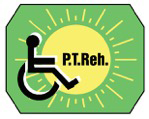


|
Current issue
Archive
Manuscripts accepted
About the journal
Editorial board
Reviewers
Abstracting and indexing
Contact
Instructions for authors
Publication charge
Ethical standards and procedures
Editorial System
Submit your Manuscript
|
2/2020
vol. 34 abstract:
Original article
Urinary incontinence due to chronic disc disease and sciatica
Izabela Aleksandra Zawadzka
1
,
Aleksandra Truszczyńska-Baszak
1
,
Katarzyna Jórasz
2
1.
Faculty of Rehabilitation, Józef Piłsudski University of Physical Education in Warsaw, Warsaw, Poland
2.
Faculty of Physical Education, Józef Piłsudski University of Physical Education in Warsaw, Warsaw, Poland
Advances in Rehabilitation, 2020, 34(2), 10–15
Online publish date: 2020/04/08
View full text
Get citation
ENW EndNote
BIB JabRef, Mendeley
RIS Papers, Reference Manager, RefWorks, Zotero
AMA
APA
Chicago
Harvard
MLA
Vancouver
Introduction
Urinary incontinence (UI) is a common health problem, which affects an increasing number of people at any age. This disease influences the physical and mental condition. People who suffer from chronic lumbar pain are more likely to have stress urinary incontinence. The aim of this study was to assess the incidence of involuntary urine leakage among group of patients with lumbar spine disc disease. An additional purpose was to find risk factors of UI in this group. Material and methods The study was conducted in the spine surgery department in one of orthopedic hospitals. The study group consisted of adults diagnosed with lumbar spine discopathy with sciatica. The control group included healthy participants. There were 50 subjects in each group. Results Based on statistical analysis, there is no significant difference between the study and the control group in the occurrence of urinary incontinence problem. Subjects with UI had a higher level of disability. Almost 74% people of the study group and 66% of the control group have never heard about the most popular form of urinary incontinence treatment, which is a pelvic floor muscles training. Conclusions 1. The main risk factors for urinary incontinence in the study group were the nature of the work performed and the sex. Hard physical work significantly increases the risk of UI. 2. The level of knowledge of treatment and prevention of urinary incontinence among participants was very low, therefore there is a need for education in this area. keywords:
urinary incontinence, disc disease, sciatic neuritis |
    |